- June 04, 2018
- 0 Comments
- In Accessible Design and Construction High-Performance Construction
- By Peter Stratton
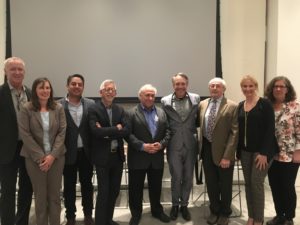
Panelists and organizers at the “Sustainable Spaces for Seniors: Design for Aging and the Environment” event at Hafele’s NYC Showroom
On May 1st, 2018, Steven Winter, founder and chairman of Steven Winter Associates (SWA), and Harold Bravo, Accessibility Consulting Director at SWA, moderated an event at the Hafele Showroom to discuss senior housing in New York City and its relation to accessible and sustainable design. The event was organized jointly by the AIANY Design for Aging Committee (DFA) and the AIANY Committee on the Environment (COTE).
A panel of experts presented perspectives from architecture, real estate development, and municipal government, and discussed the challenges of designing sustainable, comfortable, accessible, and healthy buildings for the aging population in New York City. The panel included Kleo J. King (Deputy and General Counsel, Mayor’s Office for People with Disabilities), Isaac Henderson (Development Director, L+M Development Partners), Jack Esterson (Design Partner, Think! Architecture+Design), and Rich Rosen, AIA, LEED AP (Principal, Perkins Eastman).
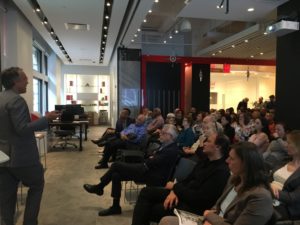 A key topic of discussion was the affordable housing stock currently available for seniors and the high demand for such buildings. Kleo J. King pointed out that over the last decade, the number of New Yorkers over 65 years old has grown approximately 20% and now comprises almost 15% of the total population. This increase in the aging population has created a rising interest in affordable senior housing options and the possibility of aging in place. Isaac Henderson also highlighted the lack of affordable senior housing and provided an overview of the Essex Crossing project, which includes two affordable buildings for senior residents and seeks to meet the needs of aging New Yorkers. He also pointed out that the City and several real estate developers are working hard to provide more housing options to seniors.
A key topic of discussion was the affordable housing stock currently available for seniors and the high demand for such buildings. Kleo J. King pointed out that over the last decade, the number of New Yorkers over 65 years old has grown approximately 20% and now comprises almost 15% of the total population. This increase in the aging population has created a rising interest in affordable senior housing options and the possibility of aging in place. Isaac Henderson also highlighted the lack of affordable senior housing and provided an overview of the Essex Crossing project, which includes two affordable buildings for senior residents and seeks to meet the needs of aging New Yorkers. He also pointed out that the City and several real estate developers are working hard to provide more housing options to seniors.
Rich Rosen and Jack Esterson showcased senior housing projects located in the Bronx and in Brooklyn, respectively. These projects show that it is possible to provide good design and high quality of life for seniors, while being in tune with the immediate environment. Designers focused on energy efficiency, use of ecofriendly materials, and functional designs that offer residents opportunities to be a part of the community and to maintain a healthy and active lifestyle. One of the showcased projects has been designed to achieve Passive House certification, a rigorous standard for energy efficiency that includes several features such as better insulation and air quality, less temperature fluctuation, and lower energy bills.
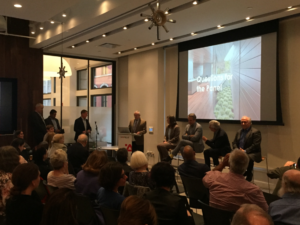 Following the presentations, the panelists answered questions from the audience. Several audience members stressed the importance of designing multigenerational housing that allows seniors to be a part of a building where people of all ages coexist socially, promoting mental health through decreased isolation. Audience members also stressed the importance of aging in place and brought up concerns that higher housing costs and constant development pressures threaten the ability of seniors to remain in their communities.
Following the presentations, the panelists answered questions from the audience. Several audience members stressed the importance of designing multigenerational housing that allows seniors to be a part of a building where people of all ages coexist socially, promoting mental health through decreased isolation. Audience members also stressed the importance of aging in place and brought up concerns that higher housing costs and constant development pressures threaten the ability of seniors to remain in their communities.
New York City certainly presents wonderful opportunities for its residents. Its dense urban environment, far reaching transportation options, and access to many services, amenities, and cultural places offers endless possibilities to live an active life. Aging New Yorkers can benefit greatly from living in their city, especially when both accessible and sustainable design are employed by architects and developers. To design sustainably, it is important to consider the three E’s of sustainability: Economy, Ecology, and Equity. Equity, in particular, is vital when thinking of seniors, as it has to do with creating fair and inclusive environments for all members of the community. This allows seniors the opportunity to age in their own homes, to remain part of the community that they have helped shape, to benefit from programs that enable them to live a healthy and fulfilling life, and to find affordable housing that suits their needs.
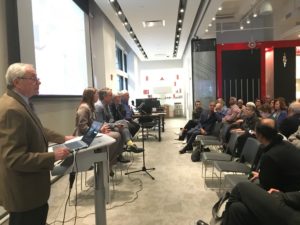 Overall, this event opened the door to a great topic that affects many of us, and hopefully it is the first of many events to come where we can continue the conversation.
Overall, this event opened the door to a great topic that affects many of us, and hopefully it is the first of many events to come where we can continue the conversation.
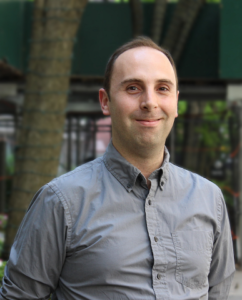
Written by Samuel Tellechea, Accessibility Consultant
